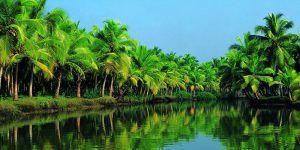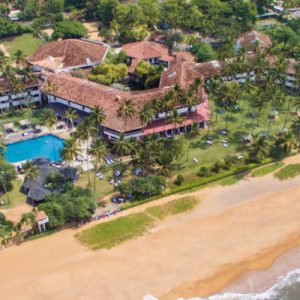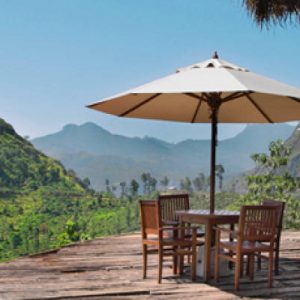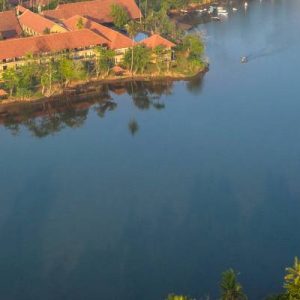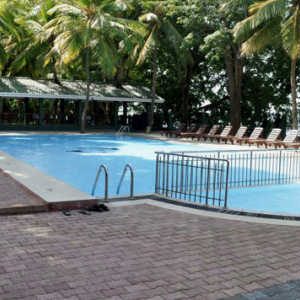Captivating and enigmatic, this tropical tear-drop island is bursting with diverse and often unexpected treasures
Rich in diversity and allure, Sri Lanka beckons with a wealth of captivating treasures waiting to be discovered. While its pristine beaches are renowned for their luxury resorts, the island also boasts a rich cultural heritage that appeals to enthusiasts. From ancient rock temples and fortresses to the remnants of sacred cities and colonial relics, Sri Lanka offers a tapestry of historical wonders to explore. Yet, beyond its cultural allure, the island's interior unfolds in a natural spectacle, with rolling tea plantations and wildlife-rich parks where elephants, leopards, and other fascinating creatures roam freely.
Sri Lanka holidays unfold at a leisurely pace, inviting travelers to embrace a slower rhythm of life. While traversing the island may take a bit longer, it allows for a deeper immersion into its enchanting ambiance. With each journey, travelers have the opportunity to absorb the surroundings and connect with the country's essence through the tales shared by knowledgeable guides. Whether you're yearning for a tranquil beach escape or an immersive adventure through Sri Lanka's landscapes, our experts are here to craft the perfect holiday experience tailored to your preferences.
Sri Lanka's allure lies in its diverse and captivating offerings, drawing visitors back time and time again. From expansive coastlines to verdant tea plantations, lush rainforests, and ancient monuments, this island nation is a treasure trove of spectacular landscapes and cultural heritage. Explore its wonders alongside knowledgeable locals who will enrich your journey with insights into their vibrant culture and rich heritage.
Sri Lanka, shaped like a teardrop, sits in the heart of the Indian Ocean, separated from the southeastern coast of India by the Gulf of Munnar and the Palk Strait. Here's a guide to the best times to visit Sri Lanka.
Beaches
Sri Lanka boasts magnificent stretches of golden sand, with the southwest coast being particularly popular. Resorts like Negombo and Bentota offer a range of accommodations, from old colonial favorites to modern resorts with extensive facilities. For a quieter option slightly off the tourist trail, consider Trincomalee district and the resort town of Passikudah on the east coast. The sloping beaches and sheltered bays make the east coast ideal for families, while its luxury properties make it an unbeatable honeymoon setting.
History - the Cultural Triangle
If you're drawn to Sri Lanka's rich history, exploring the Cultural Triangle in central Sri Lanka is a must. Sigiriya, also known as Lion Rock, is one of the country's most famous sights. Rising up from plains scattered with remnants of an ancient city, the climb to the summit, marked by two lion paws, offers breathtaking views. Nearby, the Golden Temple of Dambulla, a series of caves, houses a vast collection of Buddhist paintings and statues. Anuradhapura and Polonnaruwa, Sri Lanka's first and second capital cities, mark the northern and eastern points of the Cultural Triangle, respectively. Kandy, nestled in the verdant Hill Country, is the southern point. This former capital of the country's last remaining Kingdom boasts a mix of Kandyan and colonial architecture, along with the Temple of the Sacred Tooth Relic, one of the world's most sacred Buddhist sites. Surrounding Kandy, mist-covered hills are dotted with tea plantations, offering visitors an unmissable Sri Lankan experience.
Sri Lanka's 1000-mile coastline boasts fantastic dive sites, including wrecks rich in marine life. The warm waters and visibility range make it an inviting destination. The diving season on the south and west coast is typically from November to April, while on the east coast, it's from May to October. Popular sites include the Gorgonian Garden off Colombo's coast, the wreck of a British Merchant Navy vessel, and the HMS Hermes aircraft carrier, accessible only to technical divers due to its depth.
National parks
Sri Lanka's National Parks, from Wilpattu in the northwest to Yala in the southeast, offer rich flora and fauna experiences. Minneriya, close to the Cultural Triangle, is known for its elephant corridor between Kaudulla and Wasgomuwa National Parks. Yala, in southern Sri Lanka, boasts the world's highest concentrations of leopards. Parts of Sri Lanka, like Jaffna in the north, offer off-the-beaten-track experiences. Once isolated during the civil war, Jaffna now welcomes adventurous travelers with its local temples, city fort, and unique ice cream delicacies.
Getting around
Car and Driver: Ideal for creating your own itinerary, this flexible option allows you to explore Sri Lanka at your pace. With highways connecting popular regions, exploring with a car and driver is becoming increasingly popular.
Cinnamon Air: For a luxurious experience, opt for domestic flights with Cinnamon Air. Daily flights from Colombo Bandaranaike International Airport to popular destinations are synchronized with international airline schedules for convenience. You can add domestic flights to your itinerary at any point and even charter flights to suit your schedule.

The Complete Dubai Tour Planned by Experts
- Beaches, culture and natural beauty all combine to create one of the most diverse countries on Earth
- There are still largely off-the-beaten-track destinations that you can discover before many other travellers
- You can create your own unique itinerary and travel with your own private driver/guide
- Yala National Park has one of the highest concentration of leopards in the world
- A great family-friendly destination, especially on the quieter eastern coast.

Best of Sri Lanka & The Maldives
- Combine Sri Lanka's cultural highlights with the tropical bliss of the Maldives on this magnificent 10-night tour.
- Visit the ancient city of Anuradhapura.
- Climb to the top of Sigiriya Rock Fortress, an ancient citadel built atop a... more
10 NIGHTS
From £3299 pp (inc. flights)
Resorts & hotels in Sri Lanka
Uncover the best Sri Lanka hotels with SkyTrak Travel – from hidden-away luxury lodges that have just a handful of rooms to all-inclusive beach resorts
Explore the finest accommodations in Sri Lanka with SkyTrak Travel, ranging from secluded luxury lodges with a few rooms to inclusive beach resorts. The diversity of Sri Lanka is reflected in its hotels, offering laid-back beachfront retreats with optional all-inclusive packages, as well as exclusive locally-owned lodges situated near National Parks, in the Hill Country, and within the Cultural Triangle.
Experience a captivating blend of safari adventures, serene beaches, scenic seaplane rides, and ancient temples on a multi-centre holiday in Sri Lanka. Immerse yourself in the lush green landscapes adorned with cascading waterfalls and towering mountains, embark on thrilling game drives through wildlife reserves, and explore the rich cultural heritage at Buddhist monasteries and Hindu temples.
With our bespoke multi-centre itineraries, you have the opportunity to craft a unique journey filled with cultural exploration and luxurious relaxation. Begin your escapade in Sri Lanka, soaking in its vibrant culture and natural wonders, before unwinding on the pristine white-sand beaches of the Maldives or indulging in a desert retreat in Abu Dhabi or Dubai.Whether you seek the tranquility of island life or the dynamic energy of city vibes, our tailor-made packages ensure you experience the best of both worlds. Contact us today to start planning your unforgettable Sri Lanka multi-centre holiday.
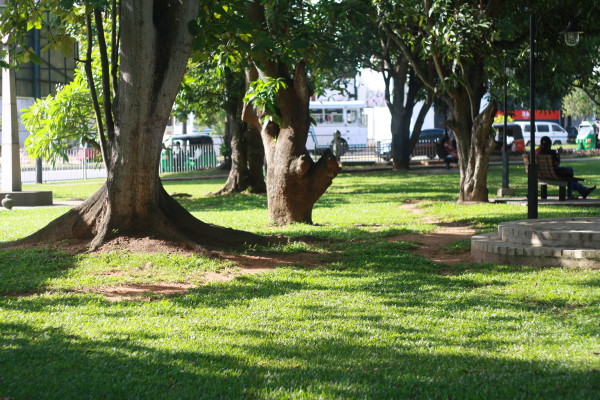
Viharamahadevi Park
Attention all nature enthusiasts! Viharamahadevi Park beckons with its serene beauty and abundant greenery. Families and friends flock to this park to immerse themselves in its tranquil atmosphere, explore its scenic waterfalls, and enjoy exciting rides. Whether you're seeking relaxation or adventure, Viharamahadevi Park offers the perfect setting to unwind and appreciate the wonders of nature.
Gangaramaya Temple
For art and culture enthusiasts, every temple in Colombo holds its own allure, and Gangaramaya Temple is no exception. This Buddhist temple is a splendid example of architectural fusion, blending elements of Chinese, Indian, and Thai styles. Exploring this magnificent temple is a highlight of any trip to Colombo, offering a captivating glimpse into its rich heritage and cultural diversity.
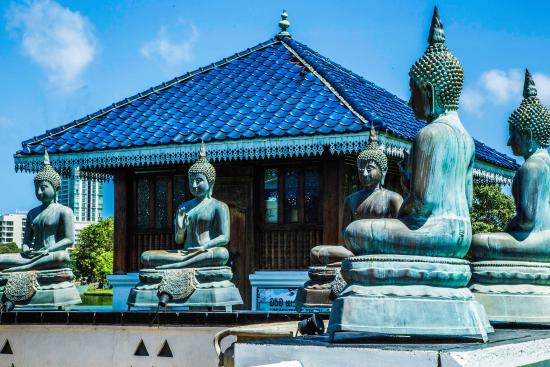
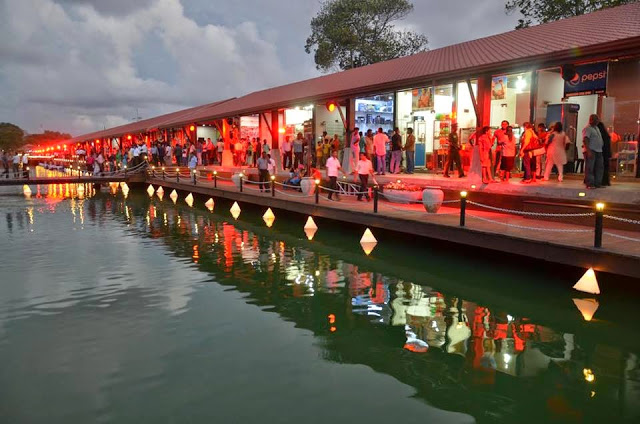
Floating Market In Pettah
A must-visit attraction in Pettah is the Floating Market, offering an immersive shopping experience. Situated above the picturesque Beira Lake, this market is a bustling hub where you can find everything from clothing, bags, and accessories to fresh fruits and vegetables. Exploring the vibrant stalls and engaging in some shopping is an essential part of any trip to Pettah, promising fun and enjoyment for all visitors.
Nightlife in Colombo
Colombo's nightlife is vibrant and diverse, offering a mix of music, dance, casinos, food, and nightclubs that ensure an enjoyable experience for all. Visitors can try their luck at the gambling tables, as it's a legal activity in this captivating island nation. Whether you're a tourist or a local, exploring the nightlife scene in Colombo is a favorite activity for everyone.
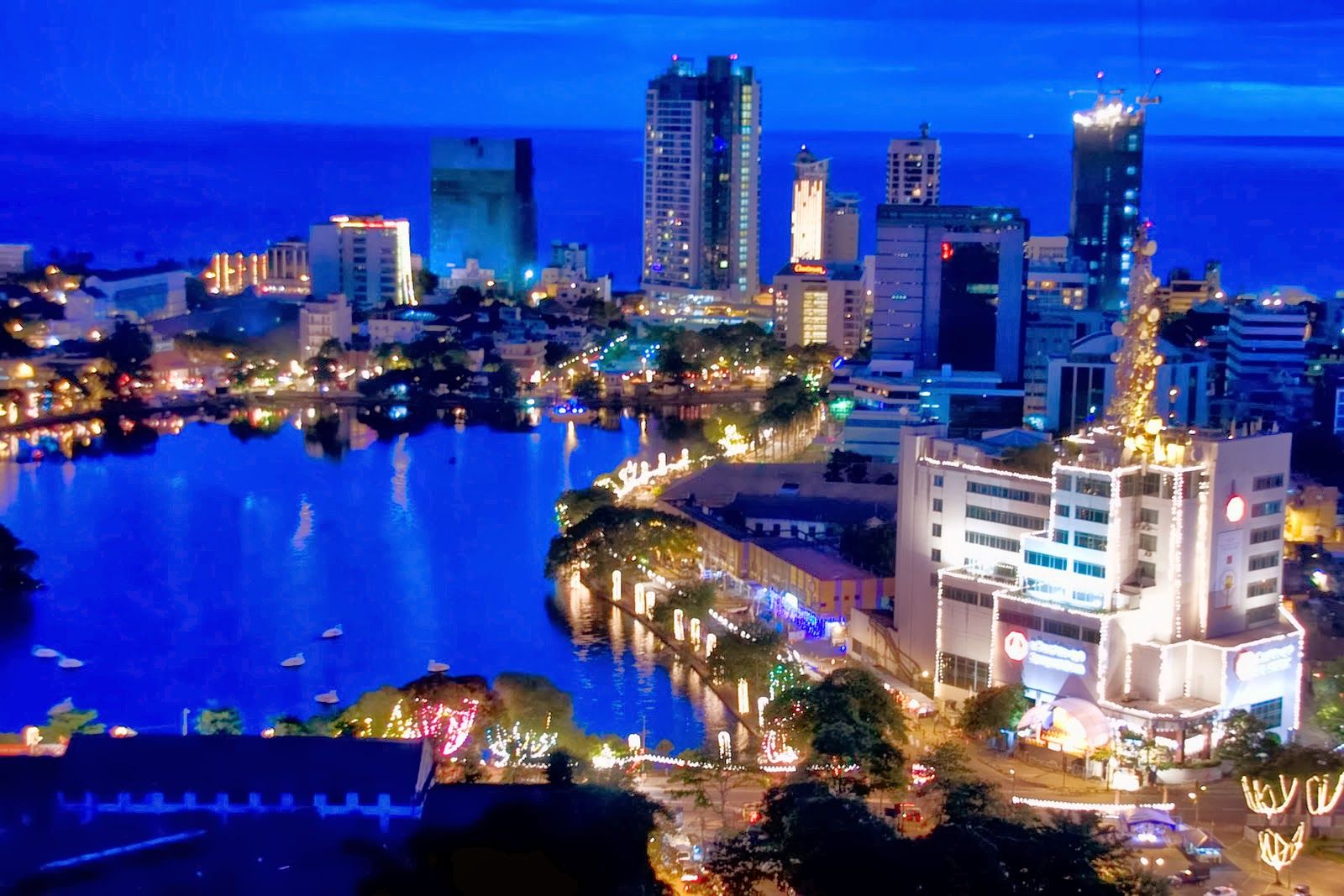
Sinhalese. Tamil and English are also widely spoken, and newspapers are printed in all three languages.
All foreign nationals staying in Sri Lanka must have an ETA (Electronic Travel Authorization).
The ETA is issued online, and no passport copies or photographs are required. To apply, please visit www.eta.gov.lk.
The ETA is only valid for six months from the date of issue, so please do not apply too early.
The cost to obtain an ETA is US$35 for tourists staying up to 30 days. This fee is payable online using Visa, MasterCard, or American Express. A minimum of 24 hours' prior notice is required.
Transit passengers and children under 12 do not need to apply for a visa.
Should you be traveling on honeymoon, the name you arrange your ETA in must match the name on the valid passport you are traveling on.
Dialling code
+94
Religion
Buddhism, Islam, Hinduism, and Christianity.
Tipping is usually around 10-15%, and a service charge (approx. 12%) is often included in the bill, even in markets. As a general guide, tip around Rs 1500-2300 per day for driver guides, Rs 200-400 for waiters and porters, and Rs 1000 for housekeeping.
Climate & Weather
| Day time maximum temperature | Night time minimum temperature | Average water temperature | Average rainfall | Average amount of sun hours | |
|---|---|---|---|---|---|
| January | 30°C | 22°C | 28°C | 72mm | 8h |
| February | 32°C | 22°C | 29°C | 128mm | 8h |
| March | 35°C | 23°C | 29°C | 184mm | 8h |
| April | 34°C | 24°C | 30°C | 121mm | 7h |
| May | 32°C | 25°C | 30°C | 365mm | 5h |
| June | 33°C | 25°C | 27°C | 414mm | 4h |
| July | 33°C | 30°C | 26°C | 72mm | 3h |
| August | 34°C | 30°C | 26°C | 128mm | 5h |
| September | 34°C | 30°C | 27°C | 184mm | 6h |
| October | 32°C | 30°C | 28°C | 121mm | 5h |
| November | 30°C | 30°C | 29°C | 365mm | 5h |
| December | 30°C | 30°C | 29°C | 414mm | 6h |
Best time to visit Sri Lanka
The best time to visit Sri Lanka varies depending on the region you plan to explore, as the island experiences two distinct monsoon seasons. Here's a breakdown of each month's weather and highlights:
Sri Lanka in January
Warm and dry weather prevails in central, western, and southern Sri Lanka, making it ideal for exploring the Cultural Triangle and coastal areas like Negombo, Bentota, or Tangalle.
Sri Lanka in February
Pleasant and sunny days continue in the west, south, and central regions, with minimal rainfall. The east coast may still experience some rain, but it becomes less intense.
Sri Lanka in March
Considered one of the best months to visit Sri Lanka, as the north-east monsoon winds down. Expect sunny days and rising temperatures across the island.
Sri Lanka in April
Warm and sunny weather persists, particularly in the west and south. It's the tail end of the dry season, making it perfect for visiting the Hill Country and cultural sites like Kandy and Nuwara Eliya.
Sri Lanka in May
Focus shifts to the east coast, where consistent sunshine and rising temperatures characterize the weather. The south-west monsoon begins, bringing short but intense rain showers to the south, west, and central regions.
Sri Lanka in June
The south-west monsoon continues, affecting the southern and western regions with increased rainfall. Meanwhile, the east coast enjoys warm and sunny days, ideal for beach activities.
Sri Lanka in July
Similar to June, with the monsoon impacting the south and west, while the east coast remains sunny. Religious festivals like Vel and Esala Perahera are celebrated during this time.
Sri Lanka in August
Rainfall decreases in the south and west, making it an excellent choice for a summer holiday. The east coast climate remains pleasant, and festivals like Esala Perahera may occur.
Sri Lanka in September
Rainfall increases again, especially in the southern and western regions, while the east coast experiences its last days of good weather. Whale-watching off the east coast is recommended.
Sri Lanka in October
Changeable weather with increased rainfall across the island. The south-west monsoon begins to fade, while the north-east monsoon approaches the north and east regions.
Sri Lanka in November
Sunshine increases in the south and west, although some rainfall persists. The Hill Country and Cultural Triangle experience high rainfall levels. The Hindu festival of Deepavali is celebrated.
Sri Lanka in December
The high season begins for beach resorts in the south and west, while rainfall decreases in the Hill Country and Cultural Triangle. Whale-watching season kicks off on the south coast, but intense rainfall continues in the north and east due to the north-east monsoon.

